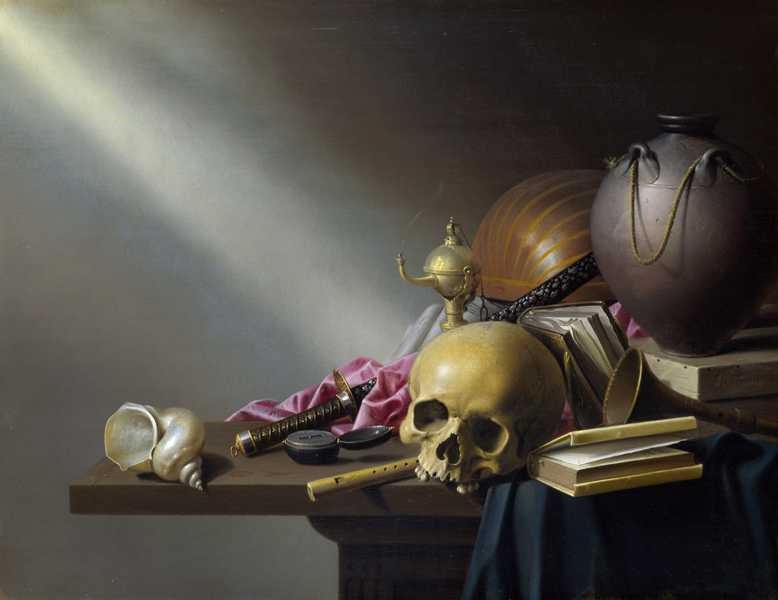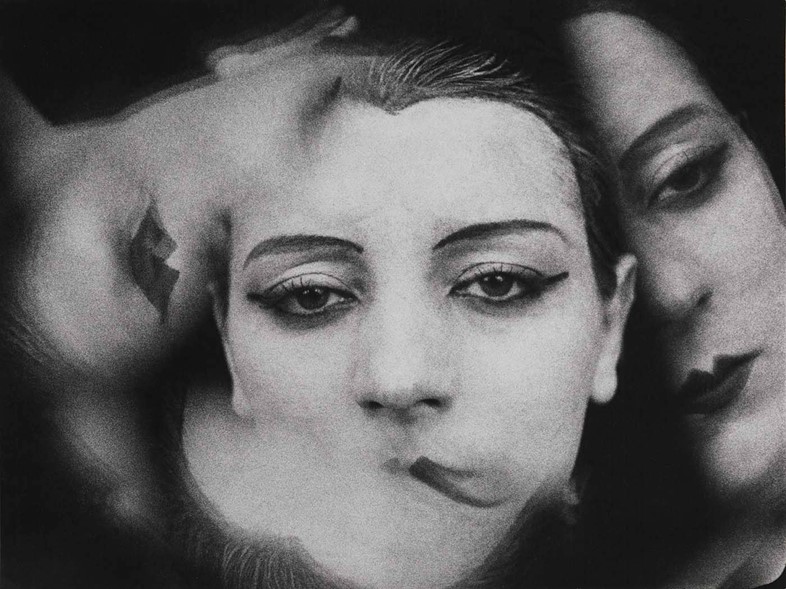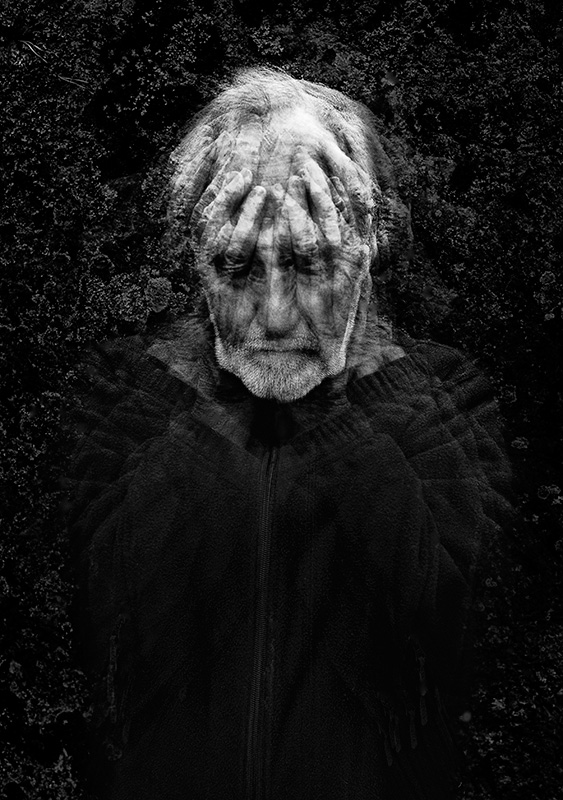How can something that doesn’t physically exist be represented through photography?
“…the images are only so many springboards for the mind of the listener” (A. Breton, Manifesto of Surrealism, 1924).
The area I will be exploring revolves around personal experiences of mental health. However this poses an intriguing question: How can something that doesn’t physically exist be represented through photography? I will be investigating different aspects of how photography can represent psychological intangibilities, most notably emotions. Showing an emotion in a photograph is on the surface simple enough; somebody crying or looking sad. However, this does not imply a sense of authenticity as photography is mute and facial expressions can be staged. In addition, it does not reveal the complexity of human experiences, and it gets much more complicated when you start trying to show those simple emotions without a necessarily obvious subject.
Take for example the work of Leif Sandberg; many of his images are self-portraits, which communicates the idea of self-reflection, and despite the fact he is part of many of his images, they are never intended for him to be ‘the subject’. The way he frames and manipulates his images make the subject something more obscure, something that doesn’t exist on a physical level. Ideas such as loss, aging, life, panic attacks and death are all explored through various images made by Sandberg, with him even saying “The Ending project is not from the outside, but from inside myself.”[i] Sandberg not only uses photography as an art form, but also as a method of therapy to help him cope with his feelings, as it gives him a way to express his emotions in a healthy way. This goes to show that in order to create emotions through photography of something that doesn’t exist, personal experience can help out with understanding how to show these emotions.
I will be exploring these concepts using a diverse range of camera techniques like multiple exposures, slow shutter speeds, the use of a remote trigger, as well as exploring different lighting setups and techniques. This subject of mental health and photographing invisible subjects links very nicely into the previously studied Occupation vs Liberation topic, as it explores ideas of isolation and being trapped somewhere with no way to get out.

This image by Leif Sandberg is part of a series of images in one of Sandberg’s books called Beyond the Mirror. Sandberg has stated in the past that his inspiration for starting photography was due to a cancer scare, which had several lasting effects on his mental health. Many of his images in this series revolve around anxiety, panic attacks, depression and the omnipresent nature of death. The image I have chosen represents not only Sandberg’s style, but also the conceptual themes and ideas mentioned previously which are common throughout his catalogue of many images. The image uses several photographic techniques, combining multiple exposures and a slow shutter speed to create a ghost like appearance. This is also a way to help show the intangible nature of emotion and this image definitely shows all of the emotions that Sandberg says he wants to portray. Sandberg’s use of shadows and shading helps to make the subject more anonymous (which was most likely an intentional decision by Sandberg), and not only opens it up for interpretation to the reader, but also adds to the idea of aging and the thoughts that surround it, making the subject look decayed and rotting. This can be linked directly to the Vanitas still-life paintings of the 17th century, especially in the way it tackles the somewhat taboo subject of death. Sandberg’s images feature heavy elements of Surrealism (which is connected to the forward thinking avant-garde modernism movement and was originally founded in Paris in 1924), as they try to explore ideas around the mind and emotions which cannot be traditionally photographed, but rather must be represented in other ways such as through objects, concepts and other associations. Surrealism was originally founded by Andre Breton, and continued the exploration of everything irrational and subversive which started with Dadaism in Europe during WWI.

Above: Harman Steenwyck, Still Life: An Allegory of the Vanities of Human Life, 1640.
This Vanitas still-life painting from the 1640s shares elements of and themes similar to that in Sandberg’s work, “which emphasises the transience of life”[ii]. This is also evident in Sandberg’s image, as it could be interpreted as a representation of death itself, and how his cancer scare made him come “face to face” with it. Vanitas paintings and what they represent have clearly influenced Sandberg’s work, however Sandberg takes a very different approach to the stylistic choices made by Steenwyck and other Vanitas painters of the time. Instead of using a strictly still-life approach of placing several smaller objects with various meanings on a table and creating an image of it, he uses himself to represent the different themes he has both felt, and also wants the viewer to feel. Sandberg’s images also lean quite heavily into the concept of Surrealism, often times more so than many of the Vanitas paintings which share the same topics and ideas. Some examples of this include concepts of mortality; usually represented by a skull or bones, As well as including ideas behind time, and is often shown by using clocks or hourglasses.

This image is taken from Sandberg’s first book “Ending” which focuses more on the emotions surrounding life before death, instead of the more abstract concepts which feature in his second book “Beyond the Mirror“. This means that his images from this series are much more grounded in reality. Despite this, Sandberg still creates emotions and feelings which cannot be traditionally photographed. This photo contrasts the previous image as it is much more personal than the first picture as it focuses on Sandberg’s own mental state, rather than exploring concepts in a specifically abstract way.
This image feels more personal than the previous photos, as you can clearly identify the man in the photo as Sandberg, whereas the other image is more open for interpretation and encourages people to think and question themselves, rather than view the images as Sandberg’s personal experience. Location also grounds this photo in reality, as opposed to the indeterminable blackness of the first image. This helps create a sense of realism which is missing from the other photo, and which can be described as completely surrealist, however despite having surrealist elements, it is clear to see how this image is meant to be a retelling of events from Sandberg’s life, or perhaps more accurately, feelings from his life.
When making my responses to Sandberg’s work, I wanted to make sure I wasn’t just creating images based on his work, but rather use some of his techniques to show emotions that I have personally felt in the past, just as Sandberg did with his emotions. I wanted to show the duality that can sometimes be seen within people suffering from mental health issues, both in the literal aspects of not being able to physically see what is going on inside people’s heads, despite what they’re feeling, as well as how people try to hide their emotions in order to seem stronger.

Continuing the theme of duality and exploring both sides is the medication aspect, and ideas behind how something that is supposed to make you feel better can actually make your mental stated worse. I wanted to show the contrast between the intended effects of the medication versus the actual impact it can have; and whether it’s a positive or negative change. I decided to shoot the pills on coloured backgrounds in order to show how the media perceives anti-depressants as a happy cure-all to fix everything in your life, when in reality it is only a step in the right direction, but can still potentially make things much worse. In terms of narrative, I wanted it to be personal, but still accessible or relatable to other people who have experienced similar emotions and experiences as well as making it easy to follow for anyone who sees it. However I also want people to be able to be able to interpret the images in their own way, so from that point of view, the story can mean different things to each reader. Whilst the image can represent different things to each person who views the book, I wanted to make sure there was a clear progression of character.
I also want to compare one of my images to Sandberg’s to show some of the elements that inspired aspects of my photoshoots. For instance, this image originally influenced me into using multiple exposures for my shoot as you can see here:
You can also see from this comparison the difference between mine and Sandberg’s work. I decided to contrast Sandberg’s messy, anxiety-fuelled image with a cleaner and more defined multiple exposure. I did this to create a more dream-like image which is not grounded in reality such as Sandburg’s. This was done to create the idea of being inside one’s head, as there is no correlation to the real world in my image, as opposed to Sandberg being in front of some shrubbery. This key difference creates totally different atmospheres in both of our images; however, it is clear to see the elements of Sandberg’s work which has inspired many parts of my own. This example of my work could also be compared to Man Ray’s Kiki De Montparnasse, which experiments with multiple exposures in a similar way; using multiple images of one subject in a surrealist way in order to create a new meaning. The parallels of manipulating the human face reinforces the surrealist concepts I have explored in my own work.

In conclusion, the use of photography to represent concepts that don’t
physically exist is a difficult thing to capture. This is mainly due to
different people’s experiences with different emotions, and how they define
them in their own heads. It is easy to take a picture of somebody crying to
make the audience see that the person is sad, however the difficult part is
delving deeper, and understanding how to show the actual emotion using
surrealist representations of different subjects. This means that the way a
photograph is taken, as well as the subject are incredibly important in helping
the audience understand the emotions you are trying to get across. Only by
finding a way to represent a certain emotion can you begin to explore different
ways of depicting it, and this is what I have tried to do for my project
[i] Photovoice Website, Sandberg, L. (2018, accessed 13/12/19 at 15:07) https://photovoice.org/how-photography-helped-me-leif-sandberg/ “The Ending project is not from the outside, but from inside myself.”
[ii] Langmuir, E. (2010), A Closer Look At Still Life. Great Britain, National Gallery Company Ltd.



Missing blog posts:
Final book layout + evaluation
Final prints + evaluation + mounting
Other blog posts as identified earlier in tracking sheet
Compile all CW prints into one black folder with labels and put in storage